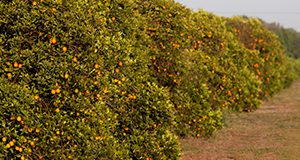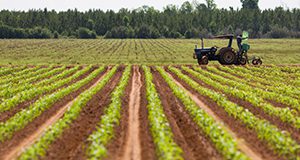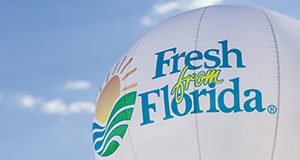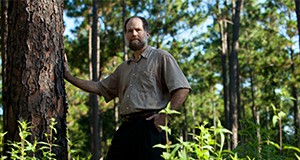
Collectively, the agriculture, natural resources, and food industries are significant contributors to the economy of the state of Florida. This 5-page fact sheet written by Christa D. Court, Alan W. Hodges, and Mohammad Rahmani and published by the UF/IFAS Food and Resource Economics Department outlines the economic contributions of these industries in calendar year 2016 to update previous reports from the Economic Impact Analysis Program and to provide current information for the purpose of informed public policy.
http://edis.ifas.ufl.edu/fe1055
Tag: Mohammad Rahmani
Economic Contributions of the Forest Industry and Forest-based Recreation in Florida in 2016
The state of Florida is half woods, with 26,807 square miles of forestland. Our extensive natural and planted pine and hardwood forests are used for production of a wide variety of wood building materials, consumer paper and packaging products, chemicals, and renewable biomass fuels. In addition to industrial forest-related activity, public forestlands in Florida support a variety of recreational activities, attract a significant number of recreational visitors, and provide many non-marketed environmental or ecosystem services. This 4-page fact sheet written by Christa Dean Court, Alan W Hodges, and Mohammad Rahmani and published by the UF/IFAS Food and Resource Economics Department describes a study that analyzed the economic contributions of the forest industry and forest-based recreation activities to the state of Florida in 2016.
http://edis.ifas.ufl.edu/fe1051
Economic Contributions of the Florida Citrus Industry in 2015/16
This 2-page fact sheet written by Christa D. Court, Alan W. Hodges, Mohammad Rahmani, and Thomas H. Spreen and published by the UF/IFAS Food and Resource Economics Department describes the economic contributions of the citrus industry to the state of Florida in fiscal year 2015/16, updating previous studies for 2012/13 and 2014/15 and previous estimates for the economic impacts of citrus greening disease.
edis.ifas.ufl.edu/fe1021
Economic Contributions of Agriculture, Natural Resources, and Food Industries in Florida in 2015, Executive Summary

An analysis was conducted using the Implan regional economic modeling system and associated state and county databases (IMPLAN Group LLC) to estimate economic multipliers and contributions for over 500 different industry sectors. Multipliers capture the indirect and induced economic activity generated by re-spending of income or sales revenues in a regional economy. A collection of 121 industry sectors were included in the analysis to represent the broad array of activities encompassed by agricultural and natural-resource commodity production, manufacturing, distribution and supporting services in Florida. Economic contributions can be measured in terms of employment, industry output, value added, exports, labor income, other property income, and business taxes. This three-page summary was written by Alan W. Hodges, Mohammad Rahmani, and Christa D. Court and published by the UF/IFAS Food and Resource Economics Department.
http://edis.ifas.ufl.edu/fe1020
Economic Survey of the Environmental Horticulture Industry in Florida in 2015
The characteristics and economic contributions of the environmental horticulture industry in Florida in 2015 were evaluated through mail and internet surveys of industry firms conducted in 2016. The executive summary of the full report, authored by Alan W Hodges, Hayk Khachatryan, Mohammad Rahmani, and Christa D. Court and published by the UF/IFAS Department of Food and Resource Economics, is available here:
http://edis.ifas.ufl.edu/fe1031.
Economic Contributions of Agriculture, Natural Resources, and Food Industries in Florida in 2014
Agriculture, natural resources, and food industries remain a significant force in the economy of Florida, and informed public policy demands recognition of the economic contributions of these industries. Economists at the University of Florida Institute of Food and Agricultural Sciences (UF/IFAS) evaluated the economic contributions of the agriculture, natural resources, and food industries for calendar year 2014 to update previous reports and provide current information on economic trends.
Direct employment in agriculture, natural resources, and food industries in Florida grew from 1.252 million jobs in 2001 to a peak of 1.351 million jobs in 2008, before declining during the Great Recession of 2009/10, and then recovering to 1.565 million jobs in 2014, which was 24.9 percent higher than 2001, representing an average annual growth rate of 1.9 percent. Overall growth in industry contributions during this period reflected an increase in exports of Florida products to domestic and world markets.
This 5-page executive summary was written by Alan W. Hodges and Mohammad Rahmani and published by the Food and Resource Economics Department.
http://edis.ifas.ufl.edu/fe993
Economic Contributions of Agriculture, Natural Resources, and Food Industries in Florida in 2013
About 1.52 million people worked full- or part-time in Florida’s agriculture, natural resources and food industries in 2013– an 8.7 percent increase in jobs over 2012.
Recognizing the significant impact agriculture, natural resources, and related food industries have on the economy of Florida is essential to informed public policy. UF/IFAS researchers used the Implan regional economic modeling system to estimate economic multipliers for over 500 different industry sectors and evaluate their economic contributions in 2013. This 5-page executive summary was written by Alan W. Hodges, Mohammad Rahmani, and Thomas J. Stevens and published by the Department of Food and Resource Economics, September 2015. (UF/IFAS File photo)
http://edis.ifas.ufl.edu/fe969
Related Resources:
Press release: http://news.ifas.ufl.edu/2015/09/floridas-agriculture-related-employment-up-8-7-percent/
Full report: http://fred.ifas.ufl.edu/pdf/FE969-FullReport.pdf
Economic Impacts of Highway Beautification in Florida
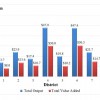 The Florida Department of Transportation is allocated money every year for highway landscaping projects. They make driving more pleasant and are better for the environment, but do they attract private investment and contribute to the economy? This study, commissioned by the FDOT, finds that the average annual economic impacts of highway beautification expenditures in Florida during 2008–2013 amounted to $46 million in output impacts and $28 million in value-added impacts. This 7-page fact sheet was written by Hayk Khachatryan, Alan W. Hodges, Mohammad Rahmani, and Thomas J. Stevens, and published by the UF Department of Food and Resource Economics, December 2014.
The Florida Department of Transportation is allocated money every year for highway landscaping projects. They make driving more pleasant and are better for the environment, but do they attract private investment and contribute to the economy? This study, commissioned by the FDOT, finds that the average annual economic impacts of highway beautification expenditures in Florida during 2008–2013 amounted to $46 million in output impacts and $28 million in value-added impacts. This 7-page fact sheet was written by Hayk Khachatryan, Alan W. Hodges, Mohammad Rahmani, and Thomas J. Stevens, and published by the UF Department of Food and Resource Economics, December 2014.
http://edis.ifas.ufl.edu/fe963
Economic Contributions of Agriculture, Natural Resources, and Related Food Industries in Florida in 2012
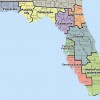 Agriculture, natural resources, and related food industries remain a significant force in the economy of Florida, and it is important to recognize their economic contributions for informed public policy. The economic contributions of these industries were re-evaluated for calendar year 2012 to update previous reports and to provide current information on economic trends in the wake of the historic global recession of 2007–2009. This 116-page report was written by Alan W. Hodges, Mohammad Rahmani, and Thomas J. Stevens, and published by the UF Department of Food and Resource Economics, July 2014.
Agriculture, natural resources, and related food industries remain a significant force in the economy of Florida, and it is important to recognize their economic contributions for informed public policy. The economic contributions of these industries were re-evaluated for calendar year 2012 to update previous reports and to provide current information on economic trends in the wake of the historic global recession of 2007–2009. This 116-page report was written by Alan W. Hodges, Mohammad Rahmani, and Thomas J. Stevens, and published by the UF Department of Food and Resource Economics, July 2014.
http://edis.ifas.ufl.edu/fe954
Economic Contributions of Agriculture, Natural Resources, and Related Food Industries in Florida in 2011
 Agriculture, natural resources, and related food industries remain a significant force in the economy of Florida, and it is important to recognize their economic contributions for informed public policy. We evaluated the economic contributions of these industries for calendar year 2011 to update previous reports and provide further information on economic trends in the wake of the historic global recession of 2007–2009. This 40-page report was written by Alan W. Hodges, Mohammad Rahmani, and Thomas J. Stevens, and published by the UF Department of Food and Resource Economics, June 2013.
Agriculture, natural resources, and related food industries remain a significant force in the economy of Florida, and it is important to recognize their economic contributions for informed public policy. We evaluated the economic contributions of these industries for calendar year 2011 to update previous reports and provide further information on economic trends in the wake of the historic global recession of 2007–2009. This 40-page report was written by Alan W. Hodges, Mohammad Rahmani, and Thomas J. Stevens, and published by the UF Department of Food and Resource Economics, June 2013.
http://edis.ifas.ufl.edu/fe935
Economic Contributions of Agriculture, Natural Resources, and Related Industries in Florida for 2010 (FE906)
 Agriculture, natural resources, and related industries remain a significant force in the economy of Florida, and it is important to recognize their economic contributions for informed public policy. The economic contributions of these industries were evaluated for 2010 to update previous reports and provide further information on economic trends in the wake of the historic global recession of 2007–2009. This 27-page report was written by Alan W. Hodges, Mohammad Rahmani, and Thomas J. Stevens, and published by the UF Department of Food and Resource Economics, August 2012.
Agriculture, natural resources, and related industries remain a significant force in the economy of Florida, and it is important to recognize their economic contributions for informed public policy. The economic contributions of these industries were evaluated for 2010 to update previous reports and provide further information on economic trends in the wake of the historic global recession of 2007–2009. This 27-page report was written by Alan W. Hodges, Mohammad Rahmani, and Thomas J. Stevens, and published by the UF Department of Food and Resource Economics, August 2012.
http://edis.ifas.ufl.edu/fe906
Economic Contributions of Agriculture, Natural Resources, and Related Industries in Florida in 2009 (FE897)
 Agriculture, natural resources, and related industries are a significant force in the economy of Florida. It is important to recognize the extent of their economic contributions for informed public policy. IFAS economists Alan W. Hodges, Mohammad Rahmani, and Thomas J. Stevens prepared this 19-page analysis using the IMPLAN regional economic modeling system and associated state and county databases. The economic contributions of these industries were evaluated for 2009 to update previous reports and provide further information on economic trends in the wake of the historic global recession of 2007-2009. Published by the UF Department of Food and Resource Economics, August 2011. (UF/IFAS photo by Thomas Wright)
Agriculture, natural resources, and related industries are a significant force in the economy of Florida. It is important to recognize the extent of their economic contributions for informed public policy. IFAS economists Alan W. Hodges, Mohammad Rahmani, and Thomas J. Stevens prepared this 19-page analysis using the IMPLAN regional economic modeling system and associated state and county databases. The economic contributions of these industries were evaluated for 2009 to update previous reports and provide further information on economic trends in the wake of the historic global recession of 2007-2009. Published by the UF Department of Food and Resource Economics, August 2011. (UF/IFAS photo by Thomas Wright)
http://edis.ifas.ufl.edu/fe897
FE839 Using Implicit Economic Multipliers to Guide Local Economic Development: An Agricultural Example in Brevard County, Florida
FE839, an 8-page fact sheet by Rodney L. Clouser, Mohammad Rahmani, Alan Hodges, and Jim Fletcher, provides an example of information for a Florida county, using Brevard County as a model, that can assist in the economic development decision process, which can be completed for minimal expenditures and can aid in the success of economic development efforts. Includes references. Published by the UF Department of Food and Resource Economics, August 2010.
http://edis.ifas.ufl.edu/fe839
FE840 Using Implicit Economic Multipliers to Guide Local Economic Development: An Agricultural Example in St. Johns County, Florida
FE840, an 8-page fact sheet by Rodney L. Clouser, Mohammad Rahmani, Alan Hodges, and David Dinkins, provides an example of information for a Florida county, using St. Johns County as a model, that can assist in the economic development decision process, which can be completed for minimal expenditures and can aid in the success of economic development efforts. Includes references. Published by the UF Department of Food and Resource Economics, August 2010.
http://edis.ifas.ufl.edu/fe840
FE829 Economic Contributions of Florida’s Agricultural, Natural Resource, Food and Kindred Product Manufacturing and Distribution, and Service Industries in 2008
FE829, a 21-page illustrated report by Alan W. Hodges and Mohammad Rahmani, provides estimates of these industries’ economic contributions to Florida in 2008. Published by the UF Department of Food and Resource Economics, February 2010.
http://edis.ifas.ufl.edu/fe829
FE802 Economic Impacts of the Florida Citrus Industry in 2007–08
FE802, a 15-page paper by Mohannad Rahmani and Alan W. Hodges, presents estimates of the total economic impacts of the Florida citrus industry on the state economy based on production values for the 2007–08 production season. Includes references. Published by the UF Department of Food and Resource Economics, June 2006.
http://edis.ifas.ufl.edu/FR802
FE800 Economic Contributions of Florida’s Agricultural, Natural Resource, and Food and Kindred Product Manufacturing, Distribution, and Service Industries in 2007
FE800, a 28-page illustrated report by Alan W. Hodges and Mohammad Rahmani, provides estimates of the agricultural, natural resource, and food and kindred product manufacturing, distribution, and service industries’ economic contributions to Florida in 2007, updating a previous study for 2006. Includes references. Published by the UF Department of Food and Resource Economics, April 2009.
http://edis.ifas.ufl.edu/FE800
FE796 Fuel Sources and Carbon Dioxide Emissions by Electric Power Plants in the United States
FE796, a 13-page illustrated report by Alan W. Hodges and Mohammad Rahmani, summarizes trends in carbon dioxide emissions of electric power plants by type of fuel and by state in the United States during the 2003–2007 period. Includes references. Published by the UF Department of Food and Resource Economics, March 2009.
http://edis.ifas.ufl.edu/FE796
FE791 The Economic Impact of Agriculture and Natural Resources in Volusia County, Florida
FE791, a 17-page report by Rodney L. Clouser, Mohammad Rahmani, and David Mulkey, provides a profile of agriculture and natural resource industries and an overview of their economic impacts in Volusia County, Florida. It is based on data from the IMPLAN Pro database for Florida counties for 2006, the 2002 Census of Agriculture, and the Volusia County Property Appraiser. Includes references. Published by the UF Department of Food and Resource Economics, February 2009.
http://edis.ifas.ufl.edu/FE791
FE750 A Cornerstone of Alachua County’s Economy and Land Base: The Economic Impact of Agriculture and Natural Resources
FE750, a 12-page report by Rodney L. Clouser and Mohammad Rahmani, provides a profile of agriculture and natural resource industries and an overview of their economic impacts in Alachua County, Florida. The report is based on data from the
IMPLAN Pro database for Florida counties for 2006, data from the 2002 Census of Agriculture and data from reports by the Alachua County Property Appraiser. Includes references. Published by the UF Department of Food and Resource Economics, September 2008.
http://edis.ifas.ufl.edu/FE750

